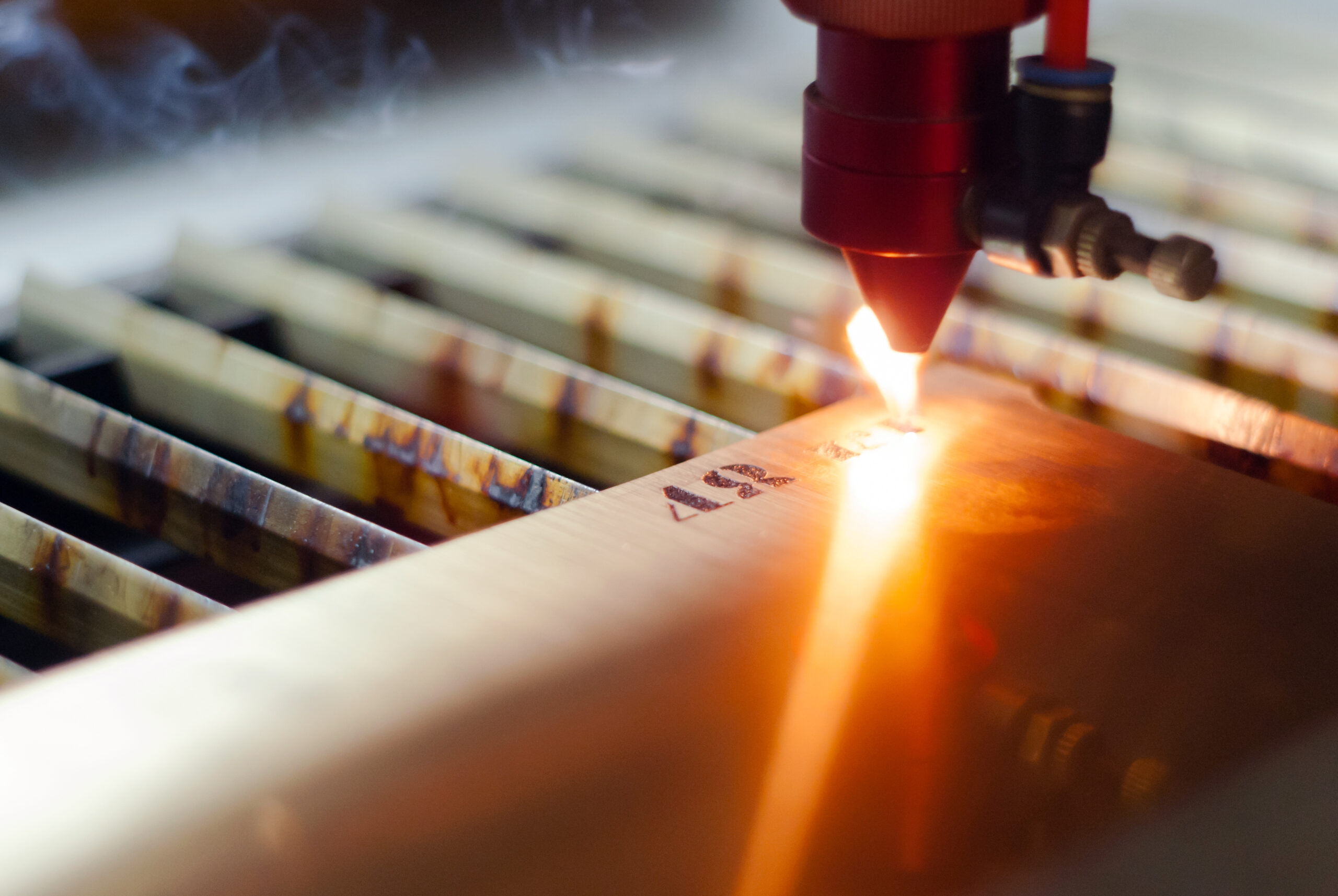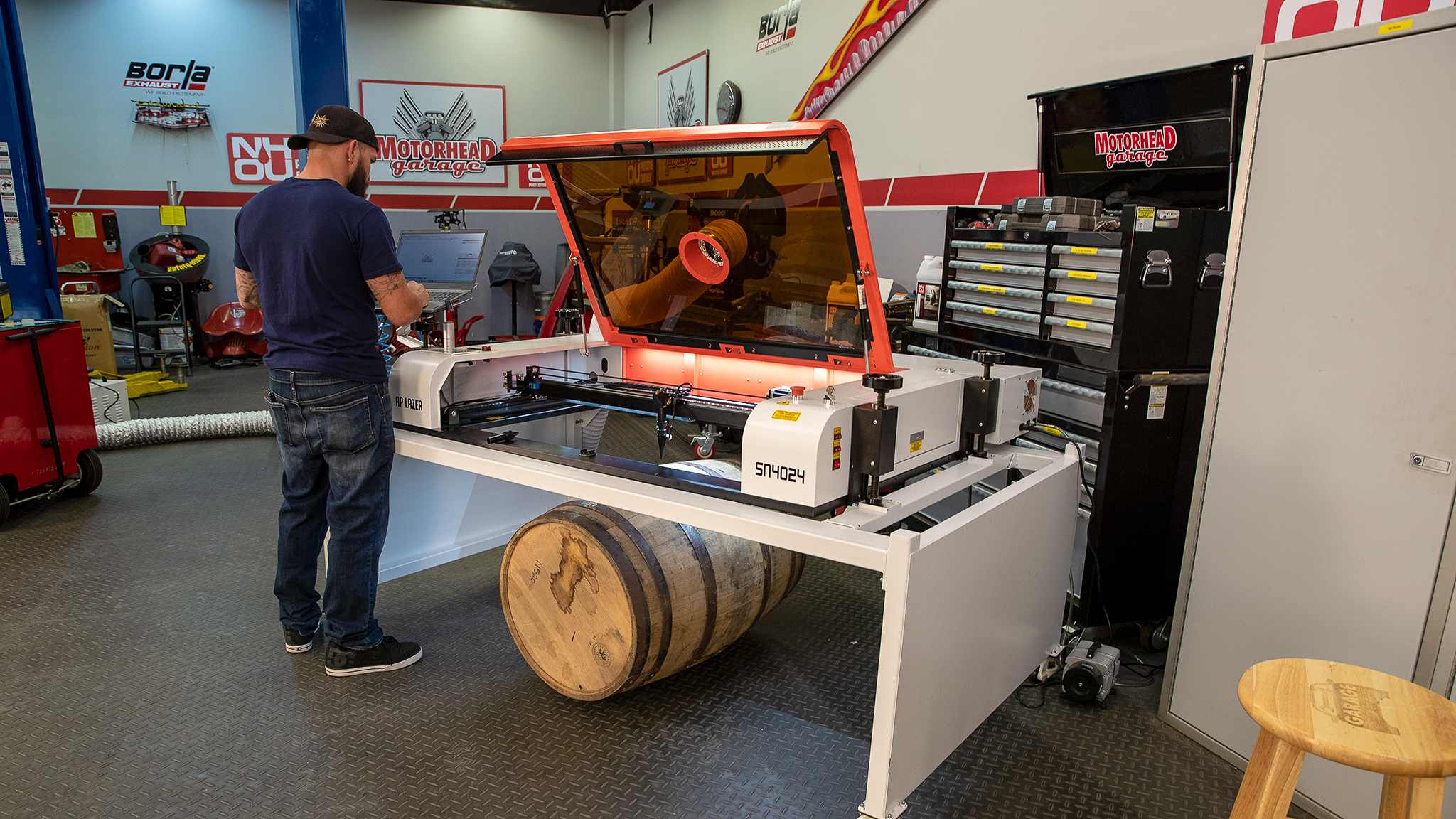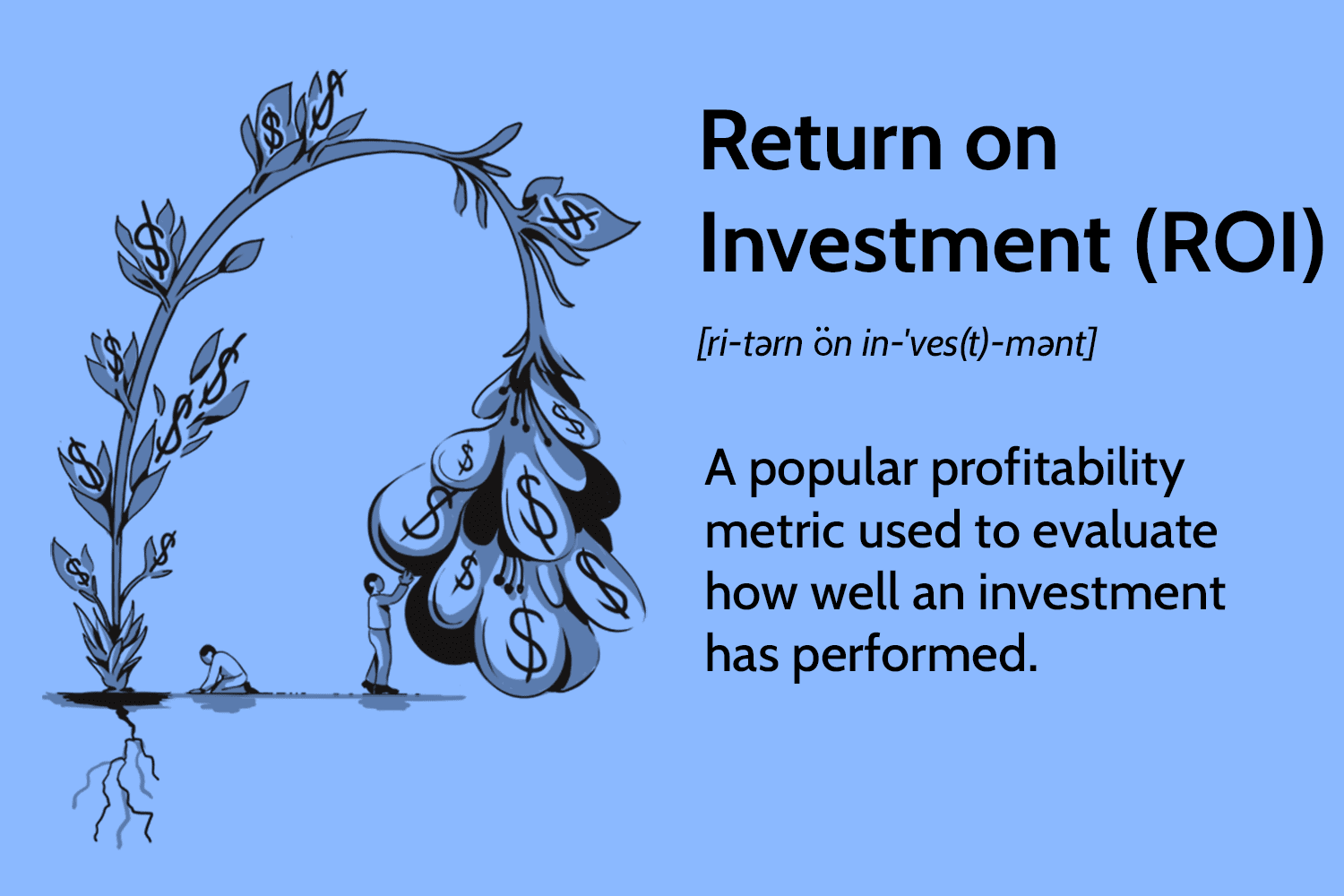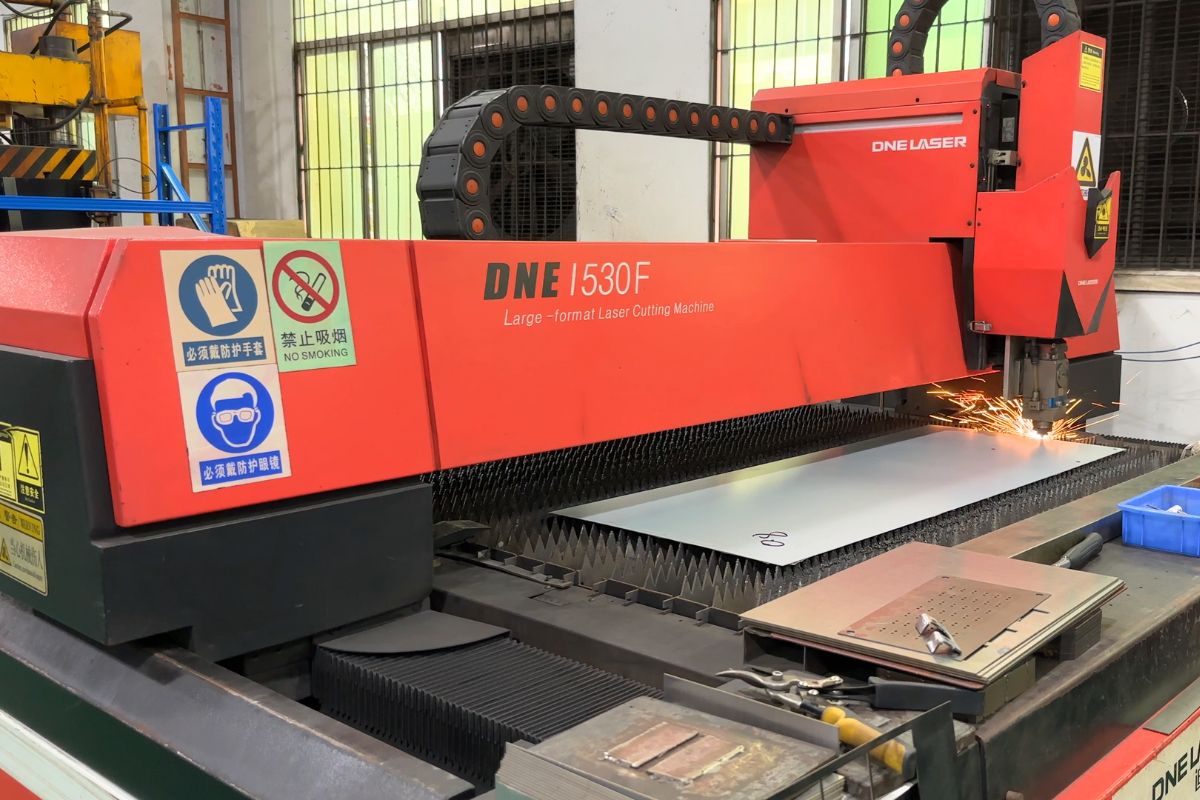
Curious about the timeline for reaping returns on yourhow soon should a small businessexpect to see ROI from laser cutters?The journey toward ROI from laser cutting technology can be an exciting yet strategic one. While outcomes may vary based on factors like businessmodel, market demand, and operational efficiency, a prudent approach and industry insights can significantly expedite this process.
Delve into our comprehensive guide that unravels the critical milestones, best practices, and actionable strategies that empower small businesses to fast-track their path to profitability with laser cutters. From optimizing workflows to identifying niche market opportunities, we navigate the nuances of this transformative technology, offering a roadmap tailored to expedite your business's ROI goals.
A Small Business Expecting To See ROI From Laser Cutters?
The return on investment (ROI)for a laser cutter in a small business can vary greatly depending on several factors, making it difficult to give a one-size-fits-all answer to your question. However, I can provide you with some insights and strategies to help you estimate your own potential ROI timeline:
Factors Influencing ROI
1. Industry and Products -The type of industry you're in and the products you create will significantly impact ROI. Businesses producing high-demand, custom-made items with laser cutting as a core process are likely to see faster returns compared to those using it for secondary tasks.
2. Machine Cost and Quality -The initial investment in the laser cutter itself plays a crucial role. Higher-quality machines might offer faster cutting speeds, greater precision, and wider material compatibility, but they come at a premium. Choosing a cost-effective option that suits your needs can accelerate ROI.
3. Operational Efficiency -Optimizing your workflow to minimize setup times, material waste, and downtime can significantly improve ROI. Investing in training for your staff on efficient laser cutting practices can be worthwhile.
4. Marketing and Sales -Effectively promoting your laser-cut products and generating sales is essential for recouping your investment. Building a strong online presence, attending trade shows, and offering competitive pricingcan help attract customers.
Strategies To Expedite ROI
1. Start with high-demand products -Identify products with consistent demand that can be efficiently produced with your laser cutter. This minimizes the risk of unsold inventory and ensures a steady revenue stream.
2. Offer customization and personalization -Laser cutting allows for intricate designs and personalization, which can add value to your products and command premium pricing.
3. Expand your service offerings -Explore offering laser-cutting services to other businesses or individuals. This can be a lucrative way to utilize your machine capacity and generate additional income.
4. Focus on cost savings -Analyze how laser cutting can reduce your production costs compared to traditional methods. Consider factors like material savings, reduced labor requirements, and faster turnaround times.
5. Track and analyze data -Continuously monitor your machine usage, production costs, and sales figures. This data can help you identify areas for improvement and optimize your operations for faster ROI.
Realistic ROI Timelines
While it's difficult to give an exact timeframe, studies suggest that small businesses can typically see ROI on their laser cutters within 6 months to 2 years, with some achieving it even faster under optimal conditions. Remember, consistent effort, effective marketing, and continuous optimization are key to achieving a quicker ROI.
By carefully considering these factors and implementing the suggested strategies, you can increase your chances of seeing a positive return on investment from your laser cutter within a reasonable timeframe.
Maximize Your Tax Deductions - Write Your Laser Cutter Off
Owning a laser cutter is a dream come true for makers, entrepreneurs, and creative enthusiasts. But did you know it can also be a tax superpower? Depreciation, the magical accounting trick, lets you spread the cost of your laser cutter over its useful life, reducing your taxable income and potentially saving you moneycome tax season. Let's dive into the world of laser-powered tax deductions!
1. Know Your Stuff
Different countries and tax systems have varying depreciation rules. Research your specific tax regulations to understand the applicable depreciation method and useful life assigned to laser cutters. Consult a tax professional if needed!
2. Keep It Documented
Receipts, invoices, and proof of purchase are your best friends. Gather all documentation related to your laser cutter purchase for smooth sailing during tax season.
3. Depreciation Methods
Popular choices include straight-line depreciation(spreading the cost equally over the useful life) and accelerated depreciation(deducting a larger portion in the early years). Choose the method that best suits your situation and tax goals.
Now, let's get strategic:
- Maximize your deductions -Claim every eligible expense related to your laser cutter – from software subscriptions and maintenance costs to replacement parts and safety equipment. Don't forget about those tiny blades that make the magic happen!
- Home office heroes -If you use your laser cutter for your business in a dedicated home office, you might be able to deduct a portion of your home office expenses. Double-check your local regulations to see if you qualify.
- Bonus depreciation bonanza -Some tax incentivesoffer increased depreciation deductions for certain equipment purchases. Check if your laser cutter qualifies for any such programs to boost your tax savings.
Remember:
- Honesty is the best policy -Don't try to fudge the numbers. Accurate record-keeping and ethical deductions are key to a stress-free tax season.
- Seek professional guidance -While this guide is a great starting point, consulting a tax professional can ensure you're maximizing your deductions and navigating the tax code like a laser-wielding champion.
With proper planning and a sprinkle of tax savvy, your laser cutter can become a powerful tool for both creative expression and financial optimization. So go forth, unleash your inner maker, and write off your laser cutter like a tax-deductible superstar!
What Is The Return On Investment?
The term "return on investment" (ROI) has two main meanings, depending on the context:
1. Financial ROI -In finance, return on investment is a performance measure used to evaluate the efficiency or profitability of an investment or compare different investments. It is expressed as a percentage and calculated by dividing the net profit (or gain) from an investment by its initial cost.
Here's the formula:
Unsupported elementNode please report to admin:
{"type":"code","children":[{"text":"ROI = (Net Profit / Investment Cost) * 100%"}]}For example, if you invest $100 in a stock and it increases in value to $120, your ROI would be 20%. This means you earned $20 for every $100 you invested.
2. Non-financial ROI -The concept of ROI can also be applied to non-financial situations, where the "return" is not necessarily measured in monetary terms. For example, you might calculate the ROI of attending a training course by considering the knowledge and skills gained, improved job performance, or increased salary.
Some Things To Keep In Mind About ROI
- ROI is a relative measure -A high ROI in one case might not be considered good in another context. You need to compare the ROI of different investments or options to assess their relative benefit.
- ROI doesn't take into account timing -A faster return on investment is generally considered better than a slower one, even if the total return is the same.
- ROI may not be perfect -It's important to consider the limitations of ROI when making investment decisions. Other factors, such as risk and uncertainty, should also be taken into account.
The True Cost Of Owning A Laser Cutter
Initial Investment
- Ventilation -A good ventilation system is essential to remove fumes and dust created during laser cutting. The cost of ventilation will vary depending on the size and type of system needed.
- Software -Some laser cutters come with basic software, but you may need to purchase additional software for more advanced features or specific materials.
- Materials -You'll need to factor in the cost of materials you'll be cutting, such as wood, acrylic, metal, or fabric. The cost of materials can vary widely depending on the type and thickness.
- Machine Cost -Laser cutters can range in price from a few thousand dollars to tens of thousands of dollars, depending on the size, power, and features. A basic CO2 laser cutter for hobbyists can start around $3,000, while a high-end industrial fiber laser cutter can cost upwards of $50,000.
Recurring Costs
- Maintenance -Laser cutters require regular maintenance, such as cleaning and lens replacement. The cost of maintenance will vary depending on the machine and how often you use it.
- Utilities -Laser cutters can consume a significant amount of electricity. Be sure to factor in the increased cost of your electricity bill.
Other Costs
- Training -If you're new to laser cutting, you may want to invest in some training to learn how touse the machine safely and effectively.
- Safety Gear -You'll need to wear safety glasses and gloves when operating a laser cutter.
- Taxes -Depending on your location, you may need to pay sales tax on the purchase of your laser cutter and materials.
Intangible Costs
- Time -Laser cutting can be a time-consuming hobby or business. Be sure to factor in the time it takes to set up, design, cut, and finish your projects.
- Space -Laser cutters can take up a significant amount of space. You'll need to make sure you have a dedicated workspace for your machine.
The true cost of owning a laser cutter can vary depending on a number of factors. However, by carefully considering all of the costs involved, you can make an informed decision about whether or not laser cutting is right for you.
Here are some additional tips for saving moneyon the cost of owning a laser cutter:
- Buy used -There are often good deals to be found on used laser cutters. Just be sure to inspect the machine carefully before you buy it.
- Join a makerspace -Many makerspaces have laser cutters that you can use for a membership fee. This can be a great way to try out laser cutting before you invest in your own machine.
- Look for deals -Keep an eye out for sales and discounts on laser cutters and materials.
- DIY -If you're handy, you can save money by building your own laser cutter. However, this is a challenging project that is not for everyone.
Benefits Of Outsourcing Laser-Cut Parts
There are numerous benefits to outsourcing laser-cut parts for your business, from cost savings and increased efficiency to improved quality and access to cutting-edge technology. Here's a breakdown of the key advantages:
1. Cost Savings
Reduced overhead costs -You won't need to worry about the cost of utilities, maintenance, and insurance associated with owning a laser cutter.
Material savings -Laser cutting service providers often have bulk discounts on materials, which can translate into lower costs for you.
Lower labor costs -Operating a laser cutter requires skilled personnel. Outsourcing eliminates the need to hire and train in-house staff, reducing labor costs.
Reduced upfront investment -Purchasing and maintaining a laser cutter can be a significant expense. Outsourcing eliminates the need for this investment, freeing up capital for other areas of your business.
2. Increased Efficiency
Freed up resources -By outsourcing laser cutting, you can free up your in-house team to focus on other tasks, such as design, assembly, and marketing.
Improved production flexibility -Outsourcing allows you to scale your production up or down easily, without having to invest in additional equipment. This is ideal for businesses with fluctuating demand.
Faster turnaround times -Laser cutting service providers have the experience and equipment to handle your projects quickly and efficiently. This can help you meet tight deadlines and keep your production on track.
3. Improved Quality
Reduced scrap and waste -Laser cutting is a precise process that minimizes waste. This can save you money on materials and reduce your environmental impact.
State-of-the-art equipment -Service providers often invest in the latest laser cutting technology, which can produce higher quality parts with greater precision and accuracy.
Access to expertise -Laser cutting service providers have skilled technicians and engineers who can ensure the quality of your parts. They can also advise you on the best materials and cutting methods for your specific needs.
4. Access To Cutting-Edge Technology
Expand your capabilities -Some service providers offer specialized laser cutting services, such as metal cutting, tube cutting, and engraving. This can give you access to capabilities that you wouldn't have in-house.
Stay up-to-date -Laser cutting technology is constantly evolving. By outsourcing, you can gain access to the latest technology without having to make a major investment.
5. Reduced Risk
Reduced liability -The service provider is responsible for any accidents or injuries that occur during the laser cutting process.
No maintenance headaches -You won't have to worry about the maintenance and upkeep of the laser cutter.
No upfront investment -Outsourcing eliminates the risk of your laser cutter becoming obsolete or malfunctioning.
Outsourcing laser cut parts can offer a multitude of benefits for businesses of all sizes. By carefully considering your needs and choosing the right service provider, you can tap into the advantages of laser cutting without the associated costs and risks.
In addition to the benefits mentioned above, outsourcing laser cutting can also help you:
- Improve your product quality and consistency
- Reduce your time to market
- Expand your product offerings
- Gain access to a wider range of materials
If you're considering outsourcing your laser cutting needs, be sure to do your research and choose a reputable service provider. Ask for quotes from multiple providers and compare their prices, services, and experiences. Once you've found the right partner, you can start enjoying the many benefits of outsourcing laser-cut parts.
FAQ's About How Soon Should A Small Business Expect To See ROI From Laser Cutters?
How Profitable Is A Laser Engraving Business?
You can absolutely make money with a laser engraving business. In fact, any laser engraver owner who is not making money with their laser machine is probably not trying to. The advantage of the laser engraver cutter is that it can turn low-cost items into valuable products quickly, accurately, and easily
Can I Make Money With A Laser Cutter?
Whether you are working with wood, glass, acrylic, leather or paper, contactless material processing with a laser also saves time and money. The effort for these unique items is manageable. Due to the high prices that can be achieved for creative, individual pieces, the profit is very handsome.
How Do I Promote My Laser Engraving Business?
Channels like social media, local eventsand print publications are ideal for advertising the business and the laser engraving services it offers. People can also reach out to local businesses or friends, asking if they need any laser engraving services
Conclusion
The timeline for a small business to witness ROI from laser cutters hinges on a myriad of factors, ranging from operational efficiency and market demand to technological integration. While there's no one-size-fits-all answer, the key lies in a strategic approach coupled with continuous optimization.
By staying agile, investing in employee training, and remaining attuned to industry advancements, small businesses can create a fertile environment for maximizing the benefits of laser cutters. Remember, patience coupled with proactive measures will ultimately pave the way toward sustainable profitability.
See Also: Proven Tips For Growing And Monitoring Your Small Business In 2023


